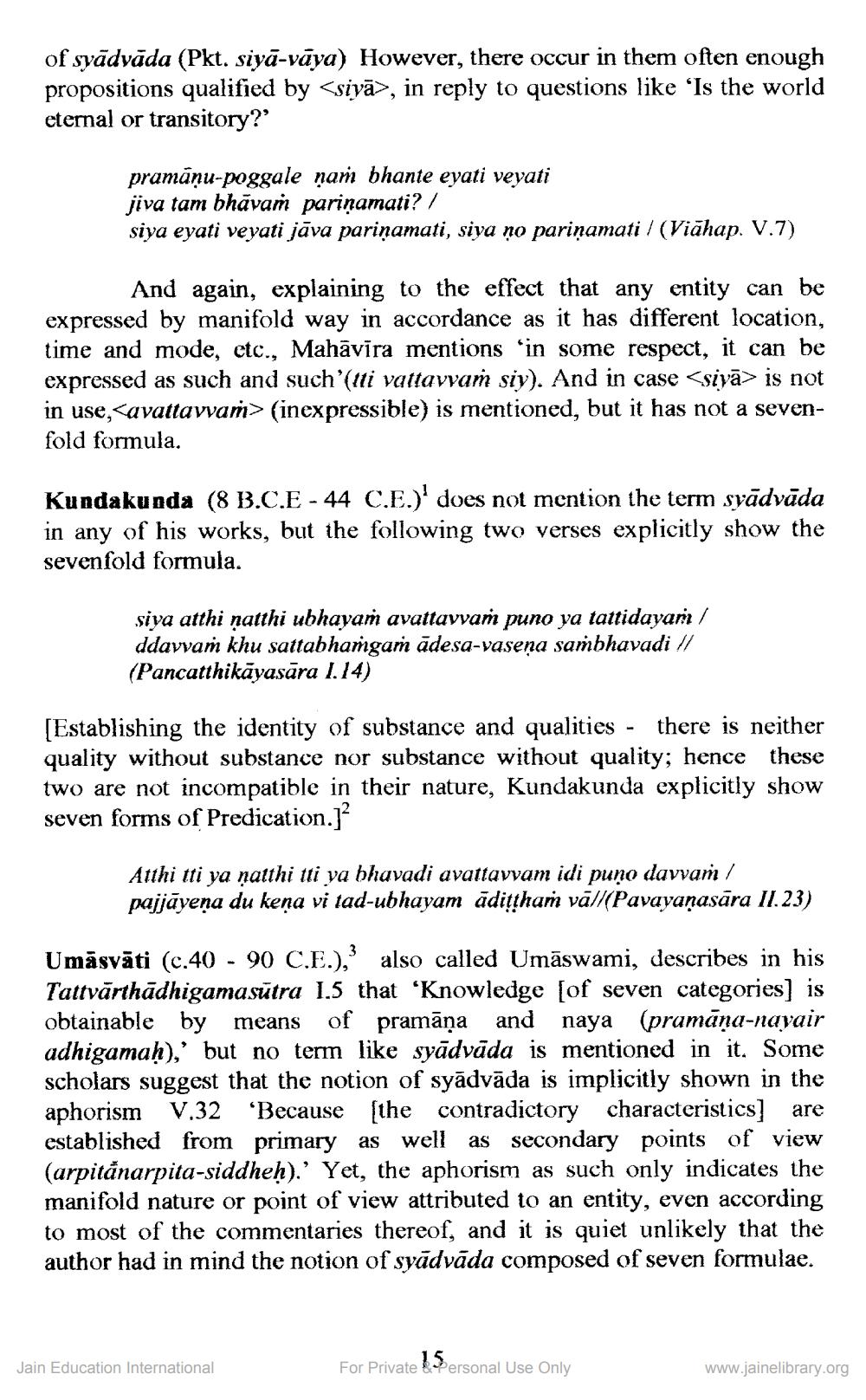________________
of syādvāda (Pkt. siyā-vāya) However, there occur in them often enough propositions qualified by <siyā), in reply to questions like 'Is the world eternal or transitory?'
pramāņu-poggale nam bhante eyati veyati jiva tam bhāvam pariņamati? / siya eyati veyati jāva parinamati, siya no pariņamati / (Viāhap. V.7)
And again, explaining to the effect that any entity can be expressed by manifold way in accordance as it has different location, time and mode, etc., Mahāvīra mentions 'in some respect, it can be expressed as such and such'(iti vattavvam siy). And in case <siyā> is not in use,<avattavvam> (inexpressible) is mentioned, but it has not a sevenfold formula.
Kundakunda (8 B.C.E - 44 C.E.)' does not mention the term syādvāda in any of his works, but the following two verses explicitly show the sevenfold formula.
siya atthi natihi ubhayam avattavvam puno ya tattidayar / ddavvaṁ khu sattabhamgam ādesa-vasena sambhavadi // (Pancatthikāvasara 1.14)
[Establishing the identity of substance and qualities - there is neither quality without substance nor substance without quality; hence these two are not incompatible in their nature, Kundakunda explicitly show seven forms of Predication.]?
Atthi tti ya ņatthi iti ya bhavadi avattavvam idi puno davvam / pajjāyena du keņa vi tad-ubhayam ādittham vāll(Pavayaņasāra II.23)
Umāsvāti (c.40 - 90 C.E.), also called Umāswami, describes in his Tattvārthādhigamasutra 1.5 that 'Knowledge (of seven categories) is obtainable by means of pramāṇa and naya (pramāna-nayair adhigamaḥ),' but no term like syādvāda is mentioned in it. Some scholars suggest that the notion of syādvāda is implicitly shown in the aphorism V.32 “Because the contradictory characteristics] are established from primary as well as secondary points of view (arpitănarpita-siddheḥ).' Yet, the aphorism as such only indicates the manifold nature or point of view attributed to an entity, even according to most of the commentaries thereof, and it is quiet unlikely that the author had in mind the notion of syādvāda composed of seven formulae.
Jain Education International
For Private Personal Use Only
www.jainelibrary.org




